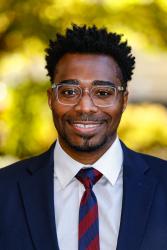Professional athletes have an extraordinary platform for public action and they are using it. They can command media time, get their calls returned by leading politicians, have access to financial resources, and can encourage broad segments of society to respond in certain ways, like voting. At a time of persistent police brutality and racist behavior, we should not be surprised that athletes and coaches are protesting and speaking out about the police violence against George Floyd, Breonna Taylor, Jacob Blake, and many others who never get a trending hashtag.
Yet, the goal of these athletes is not just to express their outrage but to drive meaningful social change and racial equity. Beyond condemning police brutality, there are a number of specific actions that would make a dramatic difference. Adoption of these items would go a long way towards reducing police use of force and preventing future police shootings.
1. Demand that tax monies not be used to pay for legal settlements in cases of officer misconduct and that police departments pay for malpractice insurance out of their own budgets.
In most areas, taxpayer money is used to pay civil settlements for police misconduct cases. So, the millions of dollars in taxes that players from teams like the Milwaukee Bucks, Los Angeles Lakers, Washington Mystics, Dallas Cowboys, Seattle Sounders, Pittsburgh Penguins, and New York Yankees pay in taxes go to civilian payouts for police misconduct. More insult to injury, these payouts do not come out of police department budgets. They come from general funds, which is money that could go to improving schools and providing work infrastructure.
New York City paid $230 million in one year for police misconduct settlements and Chicago has spent over $650 million over the past two decades.
An alternative is for police departments to have their own insurance policies to cover police misconduct settlements. While the policy will be covered by the municipality, this important change will shift accountability and financial liability away from taxpayers to police departments by including a clause that the policy is paid from the police department budget. In a market-driven approach, police chiefs can now see how much each officer is costing them due to misconduct. It will justify removing “bad apples” who are often allowed to further rotten the trees of policing. This is important because in many cities everyone one out of three tax dollars are spent on police departments. Players might also advocate for police officers carrying their own malpractice insurance. This is important too, but it is vital that police departments as a whole are on the hook for the role they play in shaping policy and practice. This is similar to the doctor-hospital model.
2. Dismantle qualified immunity
Players can also demand for absolving qualified immunity. Qualified immunity is the legislation that often prevents officers from facing civil culpability. Players simply need to advocate for the George Floyd Justice in Policing Act, which passed the House of Representatives on what would have been Tamir Rice’s 18th birthday. The Senate has failed to introduce the bill for formal discussion. Players could demand this happens. The bill also aims to demilitarize police, ban no-knock warrants, and create a federal database of police shootings and officers fired for misconduct.
3. Improve transparency in cases of police misconduct
Players can demand transparency. First, they can demand that body-worn camera video evidence be released immediately. Second, they can demand that officers’ history with use of force be released. Third, they can demand that police departments release quarterly lists of misconduct allegations. This means demanding that all officers have body-worn cameras. Kenosha officers do not. But they are not alone. From Kenosha to Prince George’s County, Maryland, all officers still do not have cameras. Finally, athletes can demand that the community have representation on internal police department misconduct boards, like Nashville is doing.
Imagine if we didn’t have video footage from everyday Americans who heroically filmed injustices when police officers did not stand up? Without video evidence, we should ask ourselves if we would even know about George Floyd, Ahmaud Arbery, Sandra Bland, Walter Scott, Eric Garner, or Marlene Pinnock—a great-grandmother who was beaten by California highway patrolmen and received a $1.5 million settlement. The officer resigned and would be on the federal list from the George Floyd Justice on Policing Act. This would ensure that the officer could not work in another department, as would have been the case for the officers who killed 12-year old Tamir Rice in Cleveland and 17-year Antwon Rose in Pittsburgh. As Will Smith said, “Racism isn’t getting worse. It is getting filmed.”
4. Fund research to improve police-community relations
There are many outstanding organizations focusing on police reform, but the research and policy component is key. At Brookings, we are engaged in innovative and transformative work with the The Lab for Applied Social Science Research (LASSR) at the University of Maryland. LASSR, where I serve as Executive Director, has developed a virtual reality program that aims to improve the decisions that officers make. We vary the setting, race, and gender of the people that officers encounter and give them feedback to reduce bias.
My research shows that implicit biases about players’ bodies and humanity extends from the ways that officers view them on their streets or in their cars to the ways that commentators and journalists describe them on the court. Players understand this as well. They realize they cannot “outclass racism.” Being famous, having high-status, or money does not stop overpolicing. Sometimes these qualities exacerbate it. This was the case for minor league baseball player Robbie Tolan who was shot in front of his home, derailing his professional career. This was the case for Milwaukee Bucks’ player Sterling Brown, who after being tazed and tackled by multiple officers in a Walgreens store parking lot said, “I look familiar, don’t I?” “Only after the stun gun was used does an officer recognize who Brown is. Not that he is a human being, but a professional basketball player for the hometown team,” wrote journalist Martenzie Johnson.
There are many other incidents that professional athletes experience as well including having the police called when going to view a property (Cam Chancellor), having the N word spray painted on their house (LeBron James), or trying to celebrate a championship on the court as a NBA executive only to have a police officer accost you (Toronto Raptors team president Masai Ujiri).
In this regard, Black professional athletes experience what W.E.B. Du Bois termed as “double-consciousness.” Double-consciousness is the concept of always seeing yourself through the eyes of others, experiencing a duality of being Black in a White world. Bishop Joseph Walker said, “This reality exists even in 2020. As athletes put on uniforms and are celebrated and applauded as they are making baskets and knocking home runs, but when they take their uniforms off, they literally can be racially-profiled as another African-American person. I understand all too well as a faith leader. I pastor one of the largest churches in the south and here I am celebrated in culture. But then, I can be driving through my neighborhood and be pulled over and terrorized in my spirit wondering whether I, as a Black man, am going to make it home.” As Deadric Williams and Armon Perry wrote, “The problem isn’t just that Black men get killed – it’s that Black families are stressed and strained by Black men’s daily encounters with police.
Athletes’ collective strike across sports matters. NBA, WNBA, MLB, NHL, MLS and tennis players have all joined in. WNBA players wore white t-shirts with seven red dots and holes on their back to represent Jacob Blake’s gunshot wounds. MLB players cancelled games and during the New York Mets and Miami Marlins, Lewis Brinson draped a Black Lives Matter t-shirt over home plate.
Players are saying: we love America, but America seems to only embrace us when we are entertaining people by dribbling or running a ball. But all bets are off on our way home from the games when our Blackness instantaneously becomes used to criminalize us rather than to celebrate us and recognize our true humanity. The collective trauma is apparent in the tears that players and coaches have shed in recent days.
But, let me be clear. These protests and demands are not just for Black players. They include all players including White players who have witnessed and heard the negative experiences of their teammates with law enforcement. Players such as Megan Rapinoe, Mike Miller, and Joe Burrow are joining in shifting from racial equity learners to racial equity advocates, accomplices, and brokers for racial justice.
Charles Barkley and Shaquille O’Neal asked what’s next for these protests after their TNT colleague Kenny Smith walked off the set in solidarity with players. After direct action of protests, there is a negotiation, as Dr. Martin Luther King laid out in Letters from a Birmingham Jail. Well, I just laid out the blueprint, as Jay-Z would say.




Commentary
What should athletes demand for police reform?
August 28, 2020